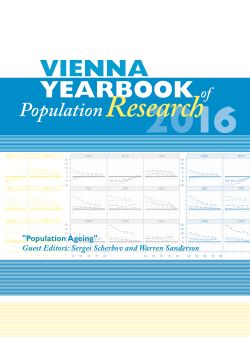
Vienna Yearbook of Population Research 2016, pp. 255-277, 2024/12/12
Special issue on “Population ageing”

There is uncertainty about whether biological and anthropometric measures that are clinical risk factors for disease are universally associated with chronological age, or whether these correlations vary depending on the social and economic context. The answer to this question has implications for the malleability of biological aging. To examine this issue, we use population-based data on individuals aged 60 and older from the Costa Rican Study on Longevity and Healthy Aging, and temporally consistent data from the United States National Health and Nutrition Examination Survey and the United States Health and Retirement Study. Our analysis focuses on 12 biomarkers that have been shown in the literature to have an association with age, and that occur prior to the clinical manifestation of disease. We find that there are few consistent patterns of association with age when these biomarkers are stratified by gender, country, and level of education. This result suggests that these measures of biological aging are highly context-dependent, and that none of the 12 biomarkers we examined are universal biomarkers of aging. Future research that investigates composite measures of biological age should test newly proposed measures across gender, social class, and country.
Keywords: Demography; Aging; Population; Biomarkers